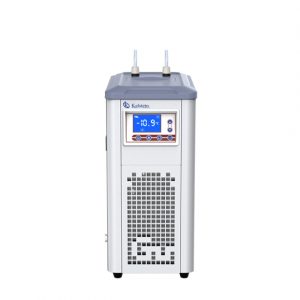Within the laboratory field, recirculation chillers are high-efficiency cooling equipment, which is used in external cooling studies, to improve sample accuracy, and in turn protect the user. These equipment, with many uses and important benefits, provide constant, low temperature situations for inspections, chemical, biological and physical experiments, which must be carried out at low temperature. Such equipment in the field of medicine, are also applied in food processes, chemical industry and teaching in universities and research institutes.
Chillers are applicable in many laboratories, to carry out a wide variety of significant intentions, from optimizing the accuracy of experiments, to renewing the safety of personnel working in the laboratory.
Technology used by Recirculation Coolers
Given the new technologies applicable in medicine, and the innovation of equipment for the development of studies, the use of recirculation chillers, are ideal for use within the laboratory, which requires continuous use, for the incorporation and circulation of refrigerant with high pressure flow, and thus, accelerate the process of heat removal of an object.
According to this, the applied technology provided by Chiller systems are used as thermal transfer flow and equipment mechanisms, so that two types of systems are distinguished:
Air-water: These are units that use this element, to exchange heat with the outside, and water is the means by which they transport heat to terminal units.
Water-water: points to the source used for heat transfer with the interior. These units show greater energy efficiency, which has led in recent years to a growth in the use of these systems.
You cannot categorically set which units are better, as they depend on different elements. On the one hand, air cooling systems are comfortable to install and, on the other hand, are better when you do not have the necessary space to accommodate it. On the other hand, water coolants are recommended, when this means is available to reject the load of the circuit, to achieve greater energy savings.
Cooling Recirculation Functions
The refrigeration recirculation activity consists of elements that allow the equipment mechanisms to meet the conditions or needs of the operator, which have to do with a compressor, a condenser, a thermostatic expansion valve and an evaporator.
The devices comply with the cooling processes, from the pumping of refrigerant gas and it is transformed into high pressure gas, so that in this way, it travels to the condenser, where the air or water of the environment receives the heat of the refrigerant and condenses it into gas to liquid.
Coolant also flows to the thermostatic expansion valve, where the pressure and temperature decrease, causing the fluid to evaporate and turn into gas. When the gas condition returns, the refrigerant is returned to the compressor and the process begins again.
It should be noted that these processes are fulfilled, if the team has Chiller’s systems.
Recirculation Cooler in Kalstein
We at Kalstein are trained to meet the demands of our users, in terms of the selection of laboratory equipment, we offer you the Recirculation Coolers, corresponding to the YR series, which have attractive features, such as: Removable side panels, for quick and easy cleaning and maintenance. The eco-friendly refrigerant meets the international standard of environmental protection; The intelligent control system will prevent the compressor from overloading, which will prolong its service life; closed circulation system, which reduces refrigerant evaporation. Equipped with a world famous brand compressor, it guarantees low noise level, high reliability, stable performance and long service life. To learn more about our products, visit HERE

